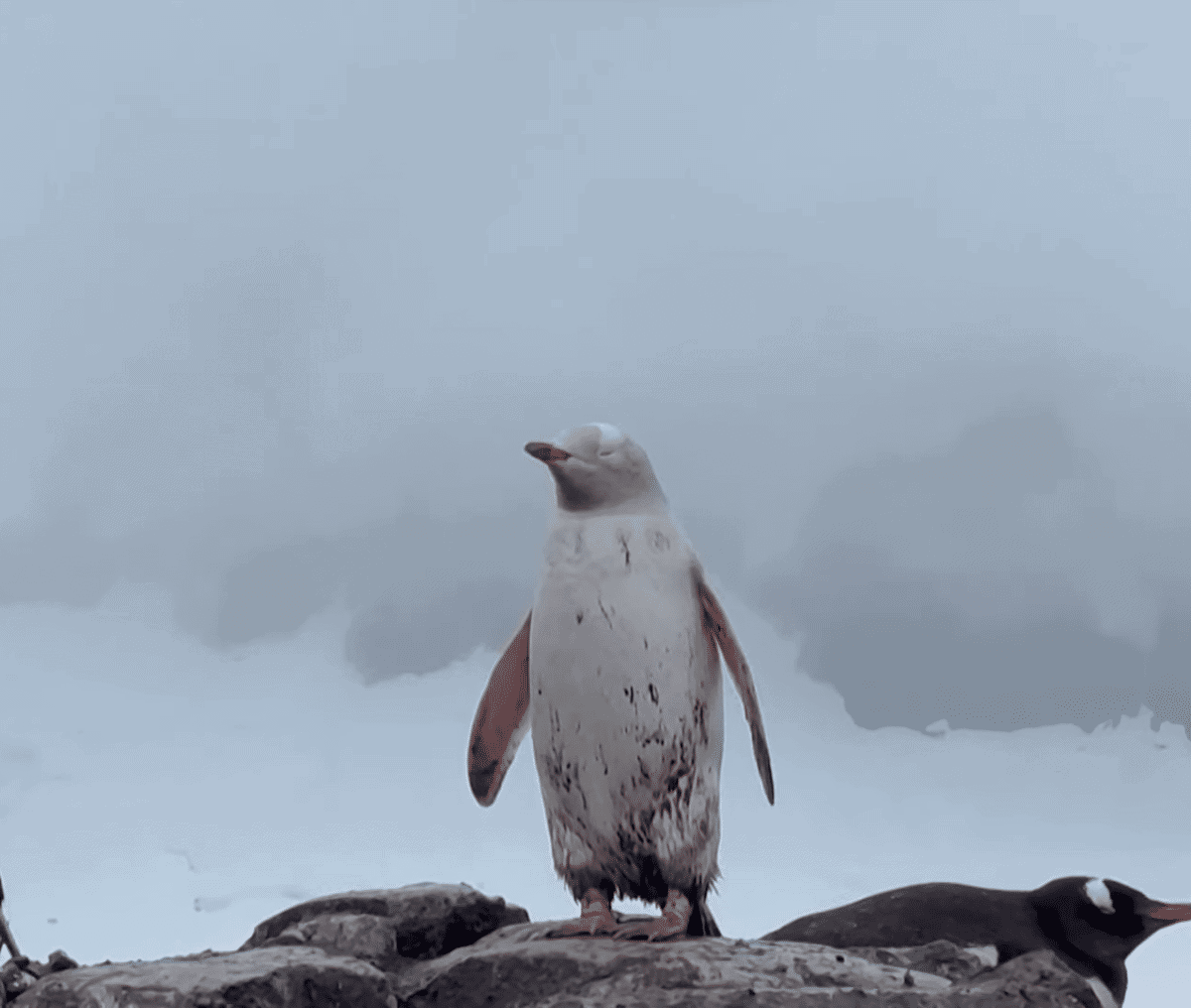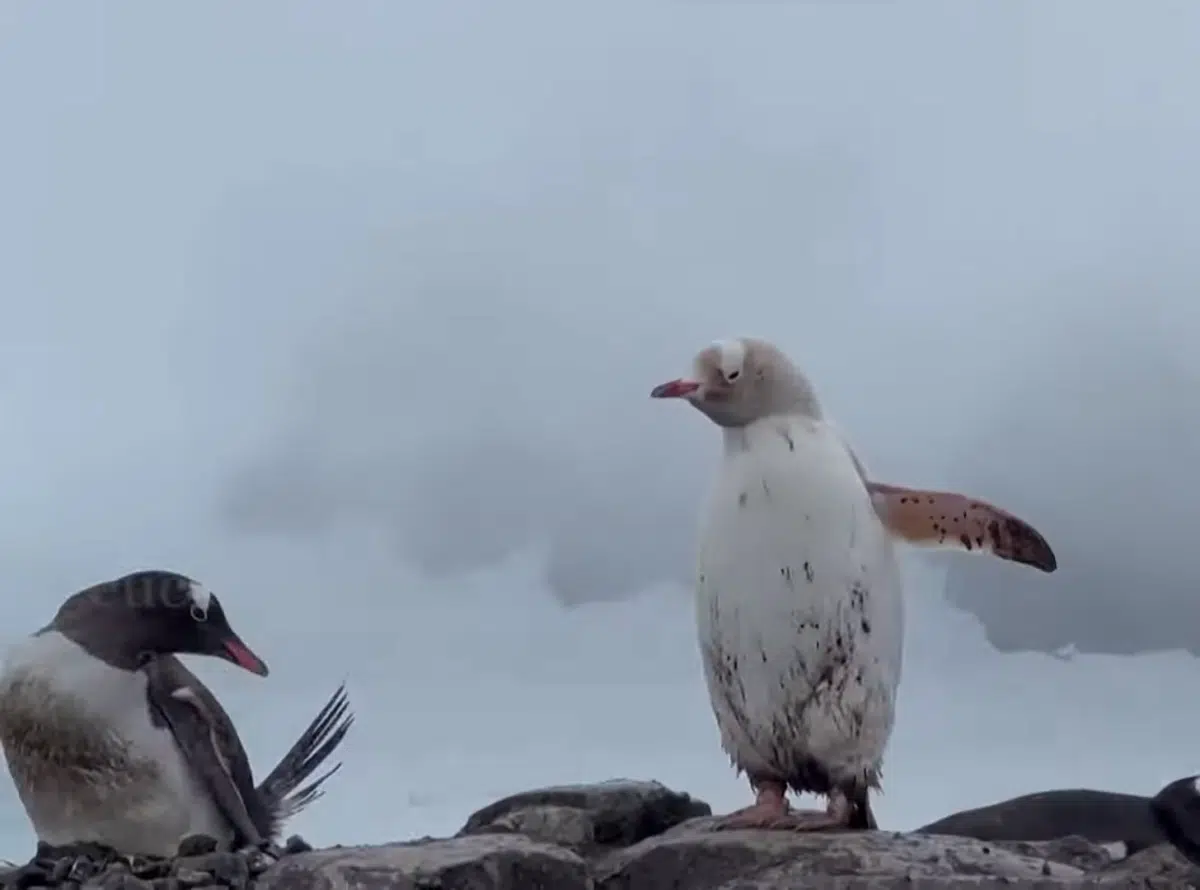A recent video captured a rare and fascinating sight in Antarctica: a white penguin, an example of an animal with leucism. This phenomenon differs from albinism, as it involves partial loss of pigmentation but does not affect the pigment cells in the eyes.

Understanding Leucism
Leucism is a condition characterized by reduced pigmentation in animals, which results in white, pale, or patchy coloration of the skin, hair, feathers, or scales, but not the eyes. Unlike albinism, which is a complete lack of melanin throughout the body, including the eyes, leucism is caused by a reduction in all types of pigment. This results in the animal’s normal eye color being maintained.
The Significance of the White Penguin
The white Gentoo penguin spotted in Antarctica is a striking example of leucism. Penguins are typically black and white, with their dark colors helping to camouflage them in their natural environment. A white penguin stands out starkly against the dark waters, making it more visible to predators and potentially affecting its ability to hunt for food.
Challenges Faced by Animals with Leucism
Animals with leucism, like the white penguin, may face survival challenges. Their unusual coloration can make them more visible to predators and may also impact social interactions with their species. However, these unique animals also provide valuable insights into genetics and biodiversity.
Conservation and Awareness
The sighting of the white penguin in Antarctica highlights the importance of conservation efforts and raises awareness about the diversity of wildlife. It’s a reminder of the need to protect these unique animals and their habitats, ensuring the continued survival and study of rare genetic phenomena like leucism.
The Impact on Wildlife
Both albinism and leucism can have significant impacts on wildlife. Animals with these conditions may have reduced camouflage, making them more susceptible to predators. They may also face challenges in social interactions within their species. However, these unique conditions also contribute to the genetic diversity of wildlife populations.
Conservation Efforts
By understanding these conditions and their effects on wildlife, we can better protect these animals and their habitats. This includes preserving biodiversity and promoting healthy ecosystems where these unique animals can thrive.
You might also enjoy:
Giant Petrels Gang Up On King Penguin and Eat It Alive
Penguins from Big to Small: An Easy Guide
Join our Forum for free today!

- The Bond Between a Wild Baby Bison and Her Rescuer - July 20, 2024
- An Excited Husky’s First Ever Time in Snow - July 20, 2024
- Top 20 Colorful Species To Brighten Your Day - July 14, 2024


